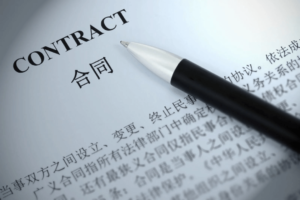Patent laws are a set of legal regulations that grant inventors exclusive rights to their inventions for a limited period of time. These laws are crucial in protecting intellectual property rights and encouraging innovation. Without patent laws, inventors would have little incentive to invest time, money, and effort into developing new technologies, as they would not be able to reap the benefits of their creations. Patent laws provide inventors with a legal framework to protect their inventions from being copied or used without permission.
The concept of patent laws can be traced back to ancient civilizations such as Greece and Rome, where inventors were granted exclusive rights to their inventions. However, it was not until the 19th century that modern patent laws began to take shape. The first patent law was enacted in the United States in 1790, followed by the United Kingdom in 1852. Since then, patent laws have been established in various countries around the world, each with its own set of regulations and requirements.
Table of Contents
ToggleKey Takeaways
- Patent laws are important for protecting intellectual property and encouraging innovation.
- Different jurisdictions have varying patent laws, with developed countries generally having stronger protections.
- Developing countries often have weaker patent laws, which can hinder innovation and access to essential medicines.
- Patentability criteria also vary across jurisdictions, with some countries allowing for broader patents than others.
- Harmonizing patent laws across jurisdictions presents challenges, but is important for promoting global innovation and access to essential technologies.
Overview of Different Jurisdictions and their Patent Laws
Different jurisdictions have different patent laws and regulations in place to protect intellectual property rights. Some of the major jurisdictions include the United States, European Union, China, and India.
In the United States, patent laws are governed by the United States Patent and Trademark Office (USPTO). The USPTO grants patents for inventions that are new, useful, and non-obvious. The duration of a patent in the United States is generally 20 years from the date of filing.
In the European Union, patent laws are governed by the European Patent Office (EPO). The EPO grants patents that are valid in multiple European countries. The requirements for obtaining a patent in the EU are similar to those in the US, with inventions needing to be new, involve an inventive step, and be capable of industrial application.
In China, patent laws are governed by the State Intellectual Property Office (SIPO). China has made significant efforts to strengthen its patent laws in recent years, in order to encourage innovation and protect intellectual property rights. The requirements for obtaining a patent in China are similar to those in the US and EU.
In India, patent laws are governed by the Indian Patent Office. India has a unique patent system that focuses on promoting innovation and access to affordable medicines. The requirements for obtaining a patent in India are similar to those in the US and EU, with inventions needing to be new, involve an inventive step, and be capable of industrial application.
Comparison of Patent Laws in Developed Countries
Developed countries such as the United States, European Union, and Japan have well-established patent laws that provide strong protection for intellectual property rights. These countries have robust systems in place for granting patents and enforcing patent rights.
In the United States, the patent system is known for its strong protection of intellectual property rights. The USPTO grants patents for inventions that are new, useful, and non-obvious. However, the US patent system has been criticized for granting overly broad patents, which can stifle innovation and competition.
In the European Union, the patent system is designed to promote innovation and economic growth. The EPO grants patents that are valid in multiple European countries. The EU patent system is known for its high quality standards and rigorous examination procedures.
In Japan, the patent system is known for its efficiency and effectiveness. The Japan Patent Office grants patents for inventions that are new, involve an inventive step, and are capable of industrial application. Japan has a strong culture of innovation and has been successful in protecting its intellectual property rights.
While developed countries have strong patent laws in place, there are also some disadvantages associated with these laws. One of the main disadvantages is the high cost of obtaining and enforcing patents. The fees associated with filing a patent application can be prohibitively expensive for small inventors and startups. Additionally, the legal costs of enforcing patent rights can be substantial, making it difficult for inventors to protect their inventions.
Comparison of Patent Laws in Developing Countries
Developing countries such as China, India, and Brazil have made significant progress in strengthening their patent laws in recent years. These countries recognize the importance of intellectual property rights in promoting innovation and economic growth.
In China, the patent system has undergone major reforms in recent years to strengthen intellectual property protection. China has made efforts to streamline its patent examination procedures and improve the quality of its patents. However, enforcement of patent rights remains a challenge in China, with widespread infringement and counterfeiting.
In India, the patent system is designed to promote innovation and access to affordable medicines. India has a unique patent system that allows for the grant of compulsory licenses in certain circumstances, such as public health emergencies. This has led to some controversy and disputes with multinational pharmaceutical companies.
In Brazil, the patent system is designed to promote innovation and economic development. Brazil has made efforts to streamline its patent examination procedures and improve the quality of its patents. However, enforcement of patent rights remains a challenge in Brazil, with high levels of infringement and counterfeiting.
Developing countries face several challenges in implementing patent laws. One of the main challenges is the lack of resources and infrastructure to effectively examine and enforce patents. Developing countries often have limited budgets and personnel to handle the increasing number of patent applications. Additionally, developing countries may lack the legal expertise and technical knowledge required to effectively examine complex inventions.
Differences in Patentability Criteria Across Jurisdictions
Patentability criteria are the requirements that an invention must meet in order to be granted a patent. The main criteria for patentability include novelty, non-obviousness, and usefulness.
Novelty refers to the requirement that an invention must be new or not previously known or used. In order to be considered novel, an invention must not have been disclosed to the public before the filing date of the patent application.
Non-obviousness refers to the requirement that an invention must involve an inventive step or be something that would not have been obvious to a person skilled in the relevant field. In order to be considered non-obvious, an invention must go beyond what is already known or used in the field.
Usefulness refers to the requirement that an invention must have a practical application or be capable of being used in some way. In order to be considered useful, an invention must have some form of utility or benefit.
While the basic patentability criteria are similar across jurisdictions, there are some differences in how these criteria are interpreted and applied. For example, the threshold for non-obviousness may vary across jurisdictions, with some countries having a higher standard than others. Additionally, the definition of usefulness may vary across jurisdictions, with some countries requiring a higher level of utility than others.
The differences in patentability criteria across jurisdictions can have a significant impact on innovation and competition. For example, if one jurisdiction has a lower threshold for non-obviousness, it may be easier for inventors to obtain patents for incremental improvements or minor modifications to existing technologies. This can lead to a proliferation of low-quality patents and hinder innovation and competition.
Examination Procedures and Requirements for Patent Applications

The examination procedures and requirements for patent applications vary across jurisdictions. These procedures and requirements are designed to ensure that only inventions that meet the patentability criteria are granted patents.
In general, the patent application process involves filing a patent application with the relevant patent office, paying the required fees, and undergoing a substantive examination. The examination process typically involves reviewing the patent application to determine whether the invention meets the patentability criteria.
The requirements for patent applications vary across jurisdictions. In general, patent applications must include a description of the invention, claims that define the scope of the invention, and any necessary drawings or diagrams. The description must provide enough detail for a person skilled in the relevant field to understand and reproduce the invention.
The examination procedures also vary across jurisdictions. In some jurisdictions, such as the United States, patent applications undergo a rigorous examination process that includes a substantive review of the invention. In other jurisdictions, such as China, patent applications may undergo a more streamlined examination process that focuses on formalities and basic requirements.
The differences in examination procedures and requirements can have a significant impact on the quality and validity of patents. For example, if a jurisdiction has a less rigorous examination process, it may be easier for inventors to obtain patents for inventions that do not meet the patentability criteria. This can lead to a proliferation of low-quality patents and hinder innovation and competition.
Patent Infringement Laws and Remedies in Different Jurisdictions
Patent infringement laws are designed to protect patent holders from unauthorized use or exploitation of their inventions. When a patent is infringed, the patent holder has the right to take legal action against the infringer and seek remedies such as damages or injunctions.
The laws governing patent infringement and remedies vary across jurisdictions. In general, patent infringement occurs when someone makes, uses, sells, or imports a patented invention without permission from the patent holder. The patent holder has the burden of proving that their patent is valid and has been infringed.
In some jurisdictions, such as the United States, patent infringement is a strict liability offense, meaning that intent or knowledge of the infringement is not required. In other jurisdictions, such as the European Union, intent or knowledge of the infringement may be required to establish liability.
The remedies available for patent infringement also vary across jurisdictions. In general, patent holders can seek damages for any losses they have suffered as a result of the infringement. They can also seek injunctions to prevent further infringement. In some jurisdictions, such as the United States, patent holders may also be entitled to treble damages or attorney’s fees in cases of willful infringement.
The differences in patent infringement laws and remedies can have a significant impact on patent enforcement. For example, if a jurisdiction has weak or ineffective patent infringement laws, it may be difficult for patent holders to enforce their rights and seek remedies. This can discourage inventors from investing in research and development and hinder innovation and competition.
Patent Licensing and Assignment Laws in Different Jurisdictions
Patent licensing and assignment laws govern the transfer of patent rights from one party to another. These laws are designed to facilitate technology transfer and promote innovation.
In general, patent licensing involves granting permission to another party to use or exploit a patented invention in exchange for royalties or other forms of compensation. Patent assignment involves transferring ownership of a patent from one party to another.
The laws governing patent licensing and assignment vary across jurisdictions. In some jurisdictions, such as the United States, patent licenses must be in writing and signed by both parties. In other jurisdictions, such as the European Union, oral licenses may be valid.
The laws governing patent licensing and assignment also vary in terms of their enforceability. In some jurisdictions, such as the United States, patent licenses are generally considered to be enforceable contracts that can be enforced through legal action. In other jurisdictions, such as China, patent licenses may not be enforceable unless they are registered with the relevant authorities.
The differences in patent licensing and assignment laws can have a significant impact on technology transfer and innovation. For example, if a jurisdiction has strict requirements for patent licenses or assignments, it may be difficult for inventors to transfer their technologies to other parties. This can hinder technology transfer and limit the potential for innovation and economic growth.
Challenges and Issues in Harmonizing Patent Laws Across Jurisdictions
Harmonizing patent laws across jurisdictions is a complex and challenging task. There are several challenges and issues that need to be addressed in order to achieve harmonization.
One of the main challenges is the differences in legal systems and cultural norms across jurisdictions. Different countries have different legal traditions and approaches to intellectual property rights. Harmonizing patent laws requires finding common ground and reconciling these differences.
Another challenge is the differences in economic and technological development across jurisdictions. Developing countries may have different priorities and needs compared to developed countries. Harmonizing patent laws requires taking into account these differences and ensuring that the needs of all countries are met.
There are also practical challenges in harmonizing patent laws, such as the coordination of patent offices and the sharing of information. Harmonizing patent laws requires cooperation and collaboration among different jurisdictions, which can be difficult to achieve.
Despite these challenges, there have been efforts to harmonize patent laws at the international level. One example is the Agreement on Trade-Related Aspects of Intellectual Property Rights (TRIPS Agreement), which was negotiated under the auspices of the World Trade Organization (WTO). The TRIPS Agreement sets minimum standards for intellectual property protection, including patents, and requires member countries to comply with these standards.
Conclusion and Future Outlook for Patent Laws Across Different Jurisdictions
In conclusion, patent laws play a crucial role in protecting intellectual property rights and encouraging innovation. Different jurisdictions have different patent laws in place, each with its own set of regulations and requirements. Developed countries such as the United States, European Union, and Japan have well-established patent laws that provide strong protection for intellectual property rights. Developing countries such as China, India, and Brazil have made significant progress in strengthening their patent laws in recent years.
There are differences in patentability criteria, examination procedures, infringement laws, and licensing and assignment laws across jurisdictions. These differences can have a significant impact on innovation, competition, technology transfer, and enforcement of patent rights.
Harmonizing patent laws across jurisdictions is a complex and challenging task, but efforts have been made to achieve this goal. Continued efforts to improve and harmonize patent laws globally are important in order to promote innovation, economic growth, and access to technology.
If you’re interested in the comparative analysis of patent laws across different jurisdictions, you may also find this article on “Securing Intellectual Property in China’s Manufacturing Sector with NNN Agreements and Patent Protection” informative. It explores the importance of Non-Disclosure, Non-Use, and Non-Circumvention (NNN) agreements in protecting intellectual property in China’s manufacturing industry. The article discusses how NNN agreements can complement patent protection strategies and provides insights into the legal framework surrounding intellectual property rights in China. Read more








